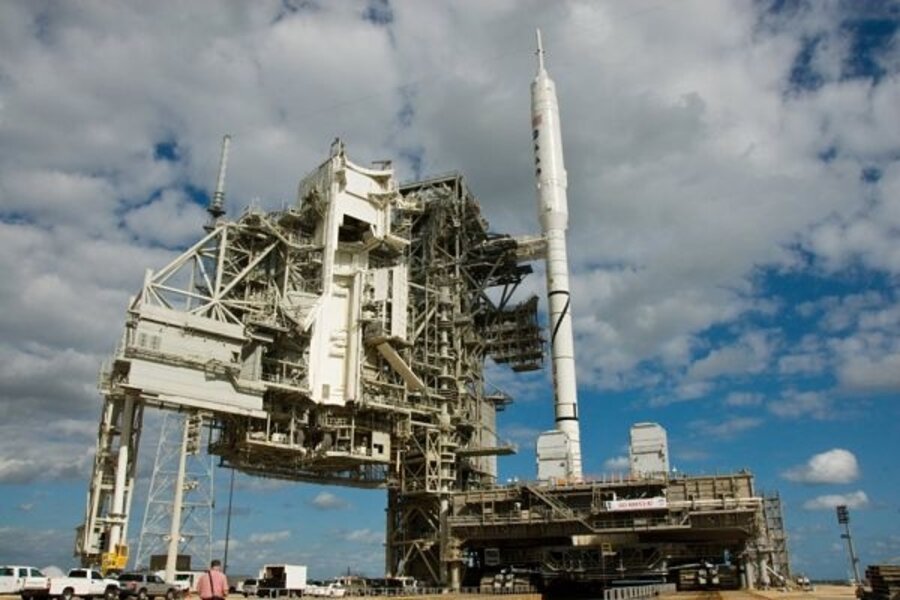NASA's Ares 1-X launch reset for about 9:24 a.m. EDT
Loading...
NASA's Ares 1-X rocket has slipped a launch time, thanks to high winds and a crew that fell a bit behind in it's pre-launch activities.
Now, mission managers are aiming for a 9:24 a.m. launch. They have until noon today. If they don't make this window, they'll try again tomorrow morning beginning at 8.
The rocket is a planned "hold" mission managers built into the countdown. But it's an extended one. The two key concerns: high-altitude clouds and wind.
As the rocket climbs and encounters water or ice droplets, the collisions build up a static charge on the rocket's skin. This charge sets up a corona around the vehicle that creates static interference with radio signals to and from the rocket.
It happens on aircraft too. Pilots call it "p static," for precipitation static. (That bit of trivia is available in case you are on a long-haul airline flight and happen to be listening to cockpit chatter with the ground.)
This phenomenon, called tribo electrification, is a problem. The Ares 1-X team needs clear signals to and from the rocket to gather up data from some 700 sensors on the test vehicle. And if the range-safety officer needs to end the launch early (the buzz phrase: thrust termination), the detonator on explosives along the rocket motor needs to be able to receive the destruct command quickly and without error.
The space shuttles have a special coating on them to eliminate the problem. And while Ares 1-X doesn't have that coating, mission officials say any final version of the Ares 1 will -- so down the road, this shouldn't be a problem.
As for winds, NASA is concerned about the strength of winds at an altitude where the atmosphere is exerting its greatest pressure on the rocket. Right now, conditions are marginal for launch.
See also:
NASA's Ares 1-X rocket gives launch day a whole new look
The NASA Ares 1-X rocket is set for launch — but watch those clouds!





